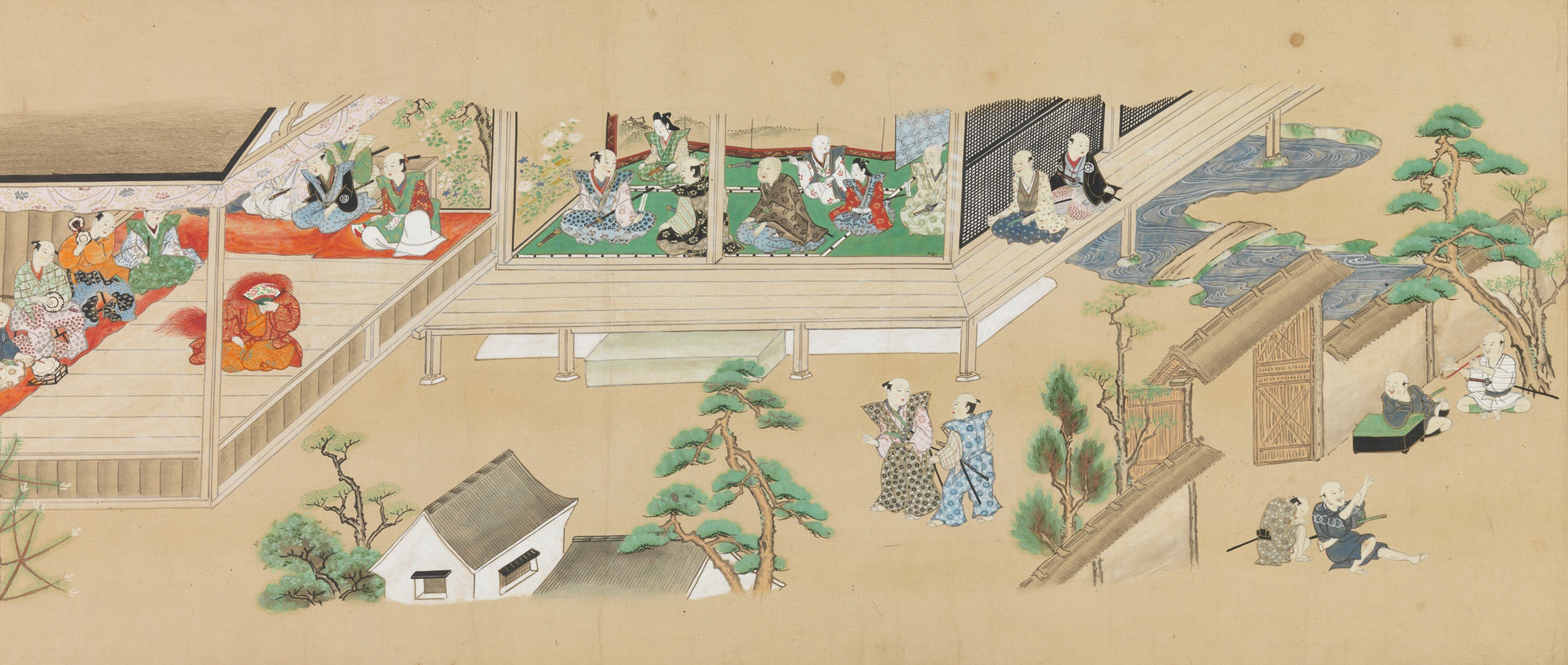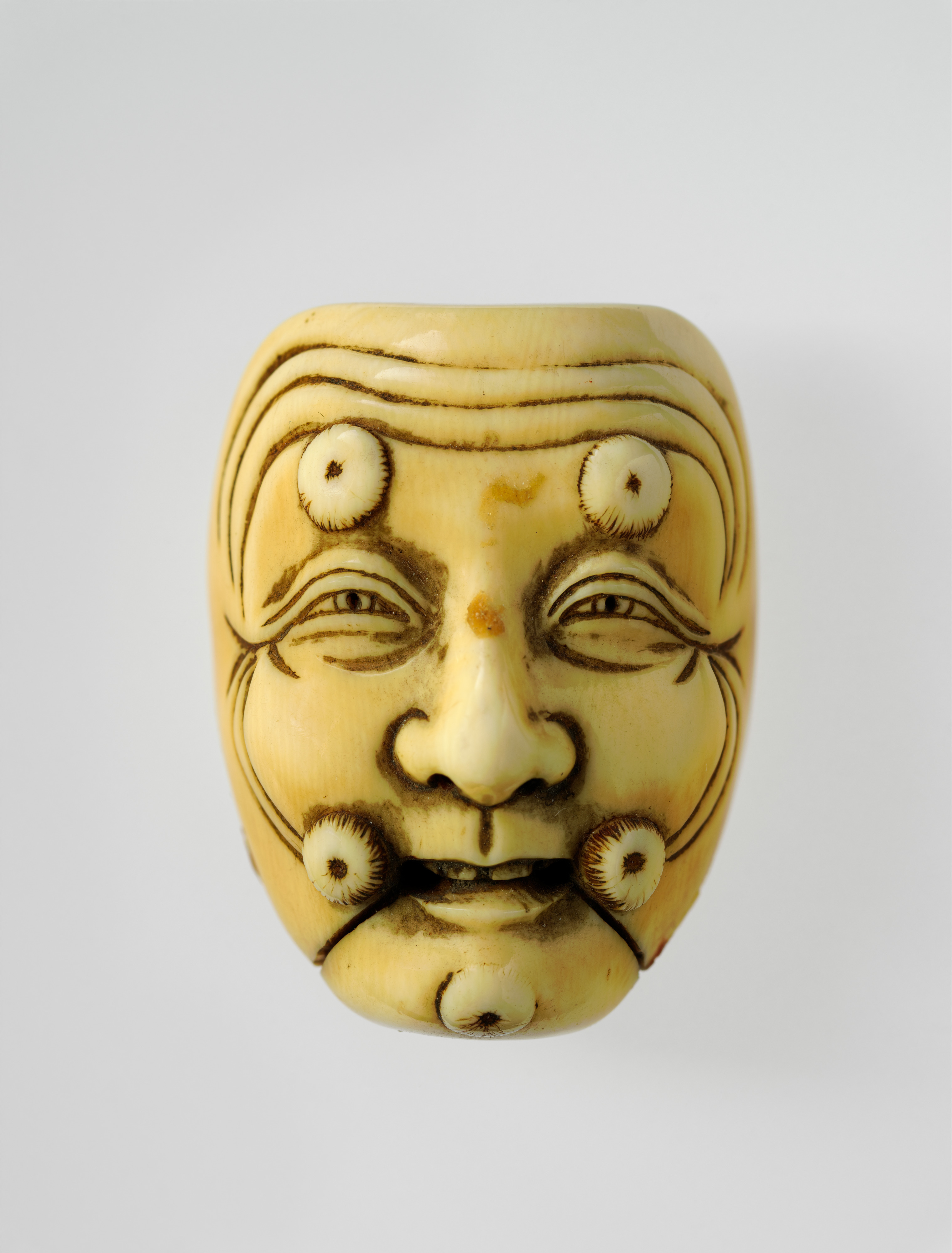Spellbinding Noh Drama at Kohfukuji Temple and Kasugataisha Shrine in Nara Vol. 2
2024/05/09
Please see here for Vol. 1 of this post.
For those who are new to Noh, a few aspects in particular are worth paying particular attention to. This is a drama chanted (often to drums) and it is the blank spaces, the in-between sounds, rather than the sounds themselves, that constitute the shaping and guiding of the music as a whole. The blank spaces, called “Ma” also inform – among other arts – visual art, and architectural, landscape, and interior design in Japan. Ma is neither audible nor visible in itself, but it is neither an absence nor secondary to the piece in which it plays its part. In Noh drama, this aspect of Japanese aesthetics can be experienced in one of its classic forms. Incidentally, it was a characteristic of Noh and of some forms of Japanese traditional music (and religion – Zen Buddhism) that famously drew American composer John Cage to it and from which he took, repurposing Ma for his own culturally-embedded works. He also created a work entitled “Noh-opera: Or the Complete Musical Works of Marcel Duchamp” – but this was not realised (and re-imagined) until 2023 in a run of successful performances at The Japan Society in New York.

Six Noh Performances in Scenes from Daily Life, late 17th–early 18th century. Handscroll; ink, color, and gold on paper. Gift of Carol and John Lyden, 2001, The Metropolitan Museum of Art.
Secondly, the economy of movement. Noh is not only a chanted drama. It is also dance. Many theatre-goers find the extreme slowness of gesture and dance in Noh theater – along with the sonorous chanting – a soporific experience. Throughout its historical development, Noh has grown slower and slower . It is entirely stylised, from its set design (a single pine tree (painted or real) and a bridge), costumes, movements, and facial expressions, and this produces a specific effect in the audience. Facial expressions and character are conveyed via a set of masks, from which different emotions are elicited by angle and lighting, and via codified physical gestures. This is, in part, the result of a strictly conservative approach to Noh, by which tradition and protocol is tightly preserved and largely shielded from innovation. But the plays are meant to have a dream-like quality, which also unfolds from this cultivated ambience. Time is often not linear, identities can be obscure, and many of the plays are concerned, as well, with the afterlife and the incursion of the supernatural into the mundane.

How Noh made its way into other parts of the culture: Netsuke (ornamental clasp for male accessories) of Mask for the Noh Play Okina by Ishimine, mid-19th century. Ivory. Edward C. Moore Collection, Bequest of Edward C. Moore, 1891. The Metropolitan Museum of Art.
During a short break between the late 19th century and the 1940s, the performance of Kohfukuji temple’s Takigi O-Noh was suspended. This was because of modernising policies that split Buddhism from Shinto. Takigi O-Noh and On-matsuri (another of Kohfukuji-Kasugataisha’s great ceremonial festivals) were both brought to a stop as they rather thoroughly mixed elements of Buddhism with Shinto, not something the government of the time encouraged. And this despite the fact that Noh had been further elevated during the late 19th century Meiji period, and had finally stopped being called Sarugaku altogether (the name had lingered) – but this serves more as testament to its now high-culture status, and does remind us of the fundamentally ritualistic functions of this dramatic art, especially when performed in temple or shrine situ. Its performance started up again during the wars of the 1940s and it was at this point that outdoor Noh performances all over Japan adopted the Nara model. For those who are especially interested in some old aspects which are not found, generally speaking, in Noh performances other than this Takigi kind, the plays are ritually-bracketed by some customs such as the ceremonial checking-of-the-lawn (the stage) called Butai Aratame, and an official proclamation that said lawn is suitable, Gen no Sengi.
Although what we can see this May in Nara is traditional – Noh troupes maintain strict rules and exclusive transmission of teaching – and though Noh’s heyday was in the mid-fourteenth century – it never stopped being made in Japan. Shinsaku Noh (New Noh Works) is a type of Noh itself – and in the 1950s Japanese novelist Yukio Mishima penned his own – but even closer in time to us, this June and September celebrated contemporary Noh playwright and director Kasai Ken’ichi is bringing two new productions of outdoor Noh to the World Heritage sites of Kumano and Koyasan. Until then, we can be well-satisfied with yet another of Nara’s ancient traditions in its two-day hosting and celebration of one of Japan’s most highly-regarded forms of art.
Takigi O-Noh Programme:
May 17th (Fri)
From 11am:
At Kasugataisha Grand Shrine, Konparu School of Noh performs Okina 翁
From 17:30: at Kohfukuji Temple, in front of the Site of the Southern Gate (Nandaimon).
・ Kanze School of Noh performs Utaura 歌占
・Okura School of Kyogen performs Enmeibukuro 延命袋
・Kongō School of Noh performs Toru 融
May 18th (Sat)
From 11am:
At Kasugataisha Grand Shrine Wakamiya, Konparu School of Noh performs Ukai 鵜飼
From 17:30: at Kohfukuji Temple, in front of the Site of the Southern Gate (Nandaimon).
・Konparu School of Noh performs Toboku 東北
・Okura School of Kyogen performs Neongyoku 寝音曲
・Hosho School of Noh performs Kannawa 鉄輪
Where: At Kohfukuji Temples’s Hannya Shiba lawn at the Nandaimon Gate (here), and at Kasugataisha’s Buden (Dance Hall) (here) and Wakamiya Shrine (here).
Access:
Kasugataisha Grand Shrine
8 minutes by bus to to “Kasuga Taisha Honden” from JR Nara and Kintetsu Nara Stations. Alight at the final stop on the bus (“Kasuga Taisha Honden”). Or 8 minutes on the city loop bus. Alight at “Kasuga Taisha Omotesando” bus stop and walk for 10 minutes.
Kohfukuji Temple
A 5 minute walk from Kintetsu Nara Station.
Admission:
Tickets for Kasugataisha: Sponsor Seats 6,500 yen per person. There are only Sponsor Seats available and no free standing/sitting space
Tickets for Kohfukuji: Sponsor Seats 6,500 yen per person OR free (standing only)
All seats in the venues are non-reserved. Tickets are available for purchase on a first-come first-served basis on the day at the entrance to the venues, and are valid for only one day.
In the case of rain, the (evening) Nandaimon-no-Gi may be moved to the Nara Bunka Kaikan (International Hall, Nara Prefecture Culture Hall) but please keep an eye, on the day, on the Nara City Tourist Association Facebook page for any changes in venue.
Please note that photography, video and mobile phone recording are not allowed.
Please feel free to contact us here at Kansai Treasure Travel anytime for further details, travel advice, or a custom tour and see our 1 Day Nara and Uji Private Tailor-made Tour
![Private: Nara and Uji Private Tour [Day trip From Osaka or Kyoto]](https://nara-sightseeing.com/ns/wp-content/uploads/2020/02/byoudouin.jpg)
This course is a tour that takes you from Osaka / Kyoto to Nara, famous for deer and the Great Buddha; and to Uji City, which is famous for tea. An English-speaking driver will go to pick you up at your hotel in Osaka / Kyoto.
from99,000JPY

01
FIND YOUR FAVORITE
TRIP ON OUR WEBSITE.
SEND US AN INQUIRY.

02
PERSONALIZE THE TRIP
TO YOUR INTERESTS
WITH OUR CONSULTANT.

03
20% DEPOSIT TO CONFIRM.
BALANCE PRIOR TO ARRIVAL.
PAYMENT BY CC OR TT.

04
WE WILL
MEET YOU
AT THE AIRPORT.

05
DISCOVER THE
TREASURES!